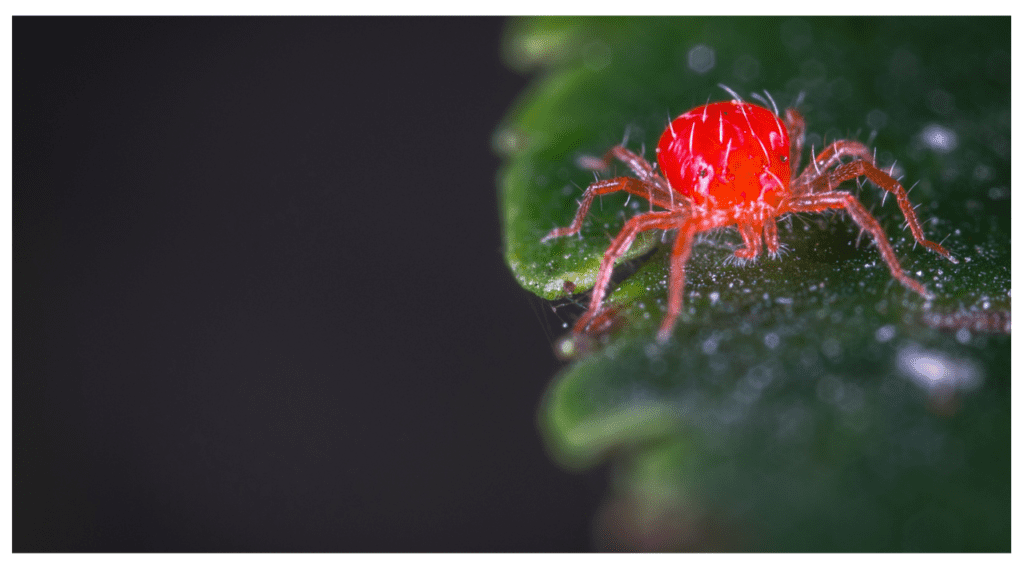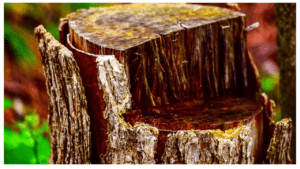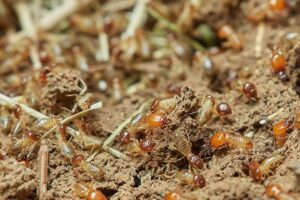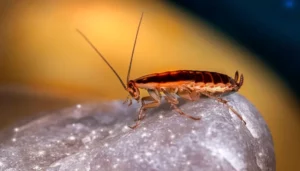Have your plants suddenly stopped growing? Or it has suddenly started drying up and its leaves are turning yellow.
Or you may see complex webs all-around your indoor plants. So you need to be careful as these can all be signs of spider mites.
Those who are fond of having plants in their homes, have to face spider mites at some point in their life.
People who don’t know what spider mites are, what their signs are, and how to get rid of them often lose their plants.
Spider mites do not only infest one plant but spread very quickly and easily from one plant to another.
In such a situation, it becomes very necessary to stop them, otherwise, they destroy all your plants very quickly.
Here I will tell you how to get rid of spider mites on indoor plants using natural ways without harming your plants.
But before that, we will take a look at all the important questions that people frequently ask about spider mites.
What Are Spider Mites and How do They Look Like?

Spider mites belong to the genus of arachnids. For example, spiders, ticks, scorpions, and mites are all included in arachnids, their specialty is that they do not have antennae in their structure.
The size of spider mites is too small, their size is as tiny as 1 mm i.e. one-fifth of an inch.
They are difficult to see with the naked eye due to their small size, but you can easily see them by using a magnifying glass.
When you look through the magnifying glass, it will look like moving dust underside of the leaves.
There are a total of 1200 different species of spider mites, the most common of which is the two-spotted spider mites, which have the potential to harm hundreds of plant species.
In this article, we are specifically going to talk about how to get rid of these two-spotted spider mites on indoor plants.
But before that, it is important to know what causes spider mites on indoor plants?
What causes spider mites on indoor plants?
Two Spotted Spider Mites thrive mostly in dry climates and are most attracted to plants that are dehydrated.
The second main cause of spider mites infestation on plants is the accumulation of dust on the leaves. When dust accumulates on the leaves of the plant, they become dry, which attracts these spider mites.
And the third reason is that the plant does not get the nutrition in a balanced quantity. Many times plant sellers put an excessive amount of chemical nitrogen in the plants, to make the plant grows quickly and looks more beautiful.
Excess chemical nitrogen makes the sap of the plant too sweet, due to which the plants attract spider mites and other sap-sucking insects.
Can a plant recover from spider mites?
Spider mites first start spreading the infestation from the bottom of the plant and move upwards.
If the infestation is spread on only a few leaves, then you can easily control it, but if the infestation has spread to the whole plant, then you have to isolate that plant and keep it under special care.
After isolating, I will tell you further in this article how you have to treat the plant.
What do spider mites hate?
Two things can bother Spider mites the most. First neem oil and second water. Because neem oil has a strong odor and spider mates hate strong odors. You can also use rosemary oil in place of neem oil.
Also, spider mites do not like moisture, so spraying water on them can cure minor infestations.
Do humidifiers prevent spider mites?
Humidifiers are a great way to protect your plants from spider mites, but you should only use them in dry climates. If you use it in a humid climate, your plants may be at risk of getting termites.
I would advise you to invest in a humidifier only if you have a large number of indoor plants. If you have a small number of indoor plants, you can also protect them by giving them enough water.
And keep spraying them with water from time to time so that the moisture remains in them and you must keep your indoor plants in the sunlight for some time during the day.
What Are Some Major Signs of Spider Mites on Indoor Plants?
Before treating spider mites, it is very important that we should be able to identify whether the infestation is actually of spider mates or not?
The main sign of spider mites infestation on indoor plants is the discoloration of the leaves of the plant.
During the initial stage of infestation, the leaves begin to discolor and gradually the leaves turn yellow and fall from the twigs.
The second main sign is the accumulation of silk webs and dust on the leaves and twigs of the plant.
Basically what you think of as dust is not dust but tiny spider mites and their eggs. You can easily see them using a magnifying glass.
The third main sign is the appearance of small holes on the leaves. When the spider mites pick up the juice from the leaves, the leaves become dry and if the spider mites keep chewing them even after they are dry, then they start getting holes.
These are the three main signs that tell you that your indoor plants have been attacked by spider mites and you need to find a solution right away.
Now we come to the point and tell you how you can get rid of spider mites on indoor plants.
How to Get Rid Of Spider Mites on Indoor Plants Naturally?
There are three main ways to get rid of spider mites. First natural methods, second biological methods, and third chemical methods.
I would not recommend using chemical methods at all as they can kill your plant. Because pesticides kill spider mites as well as kill beneficial insects.
Biological methods are also used more in agriculture to get rid of spider mites.
You can also use biological methods for indoor plants. Here I will tell you both natural and biological methods.
Oil Spray For Spider Mites:
Like I told you earlier, spider mites hate strong odors. In such a situation, there are some essential oils that you can use to get rid of two-spotted spider mats.
Neem oil and rosemary oil work very well on spider mats. You can also use spearmint and chamomile oil. All you have to do is put a few drops of oil in a spray bottle and spray it on the infested area.
It has been found in many studies and experiments that oils with strong odor work very effectively on spider mites.
Dish Wash Spray for Spider Mites:
This seems to me to be the easiest and most economical way to get rid of spider mites. Since dish wash has a strong odor, it keeps spider mites away from plants and prevents them from coming back.
All you have to do is mix 3 tablespoons of dish soap in 1 gallon of water and spray it on the infested area. After spraying, you have to leave it on the leaves for a few hours and then gently wash it off. This spray solution is also recommended by the Oregon State University Extension Service.
Rubbing Damp Cotton on Plants:
This is the easiest method for small-scale infestation spider mates. All you have to do is moisten a cotton ball in water and gently clean the infested area, remove all the web and clean the accumulated dust.
What you see as dust on the leaves is actually not dust but spider mites and their eggs which appear in dust form.
Baking Soda Spray for Spider Mites:
Baking soda is registered by the Environmental Protection Agency as a bio-pesticide in The United States. Reference.
Sodium bicarbonate is found in baking soda, whose nature is quite mild and does not harm the plants.
Baking soda protects your plants not only from spider mites but also from termites and other dangerous pests.
To use it, you have to mix one tablespoon in 1-gallon water spray it on the infected area and wash it after a few hours.
Other Biological Methods to Kill Spider Mites:
Biological methods are mostly used in farms to get rid of and prevent termites, spider mites, and other types of pests.
This method works well for potted plants and indoor plants as well. All you have to do is release any natural live predators into the potted plants. Thrips and lacewings work best for spider mats, and you can also use predatory mites.
Mentioned above are some effective methods to help you get rid of spider mites on indoor plants. Many people also have a question whether vinegar spray works on spider mites or not?
So let’s clear this doubt for you too.
Does Vinegar Kill Spider Mites on Indoor Plants?
As I have seen many articles in which it has been told about Vinegar Spray. But I would like to tell you that vinegar can be dangerous for sensitive plants because it contains acetic acid which is not mild at all.
I wouldn’t recommend using vinegar on potted plants at all. You can use baking soda in place of vinegar, which is milder and can be used on all types of plants.
How to Control Large Scale Spider Mite Infestation on Indoor Plants?
Spider mites spread their infestation very rapidly. A female adult lays 100 or more eggs at a time, and in 5 to 7 days, these eggs turn into adult spider mats.
If you are getting signs of spider mites on more than one plant, the first thing you should do is to quarantine all those plants in a separate place.
If you put a humidifier on the quarantine place, then it will be very good. But if you do not want to invest in a humidifier, then you have to make sure that the plants get enough water and sunlight.
When spider mites attack indoor plants, the plant becomes very dehydrated, so you have to give it a moist environment.
After this, you have to first treat those plants in which the infestation is less. You can use any of the methods mentioned above. If there is more than 70% of the infestations on the plants, it is a bit difficult to save them.
Now you can put the plants on which the infection has gone back to their fixed place.
Conclusion:
I hope you now understand how you can easily get rid of spider mites on indoor plants.
Spider mites infestations can be easily treated with water if caught at an early stage. But if the infestation has increased, then you can use the methods mentioned above.
If the infestation is spreading rapidly, then especially you have to quarantine the infested plants and give them special treatment. If you do not quarantine them on time, all your plants may be eaten by spider mites.

![You are currently viewing How to Get Rid of Spider Mites On Indoor Plants [Naturally]](https://bugssolution.com/wp-content/uploads/2022/01/Untitled-design-1-e1642932838979.png)





